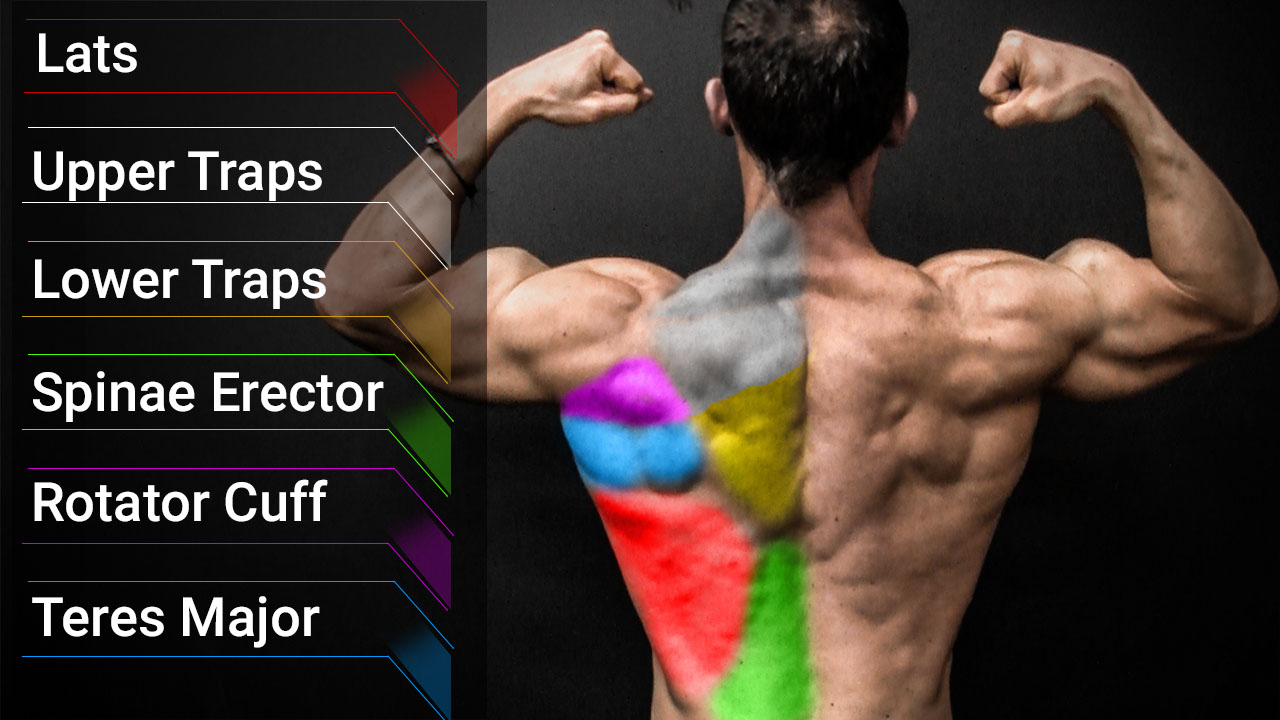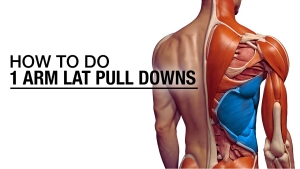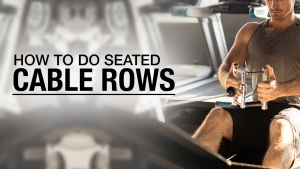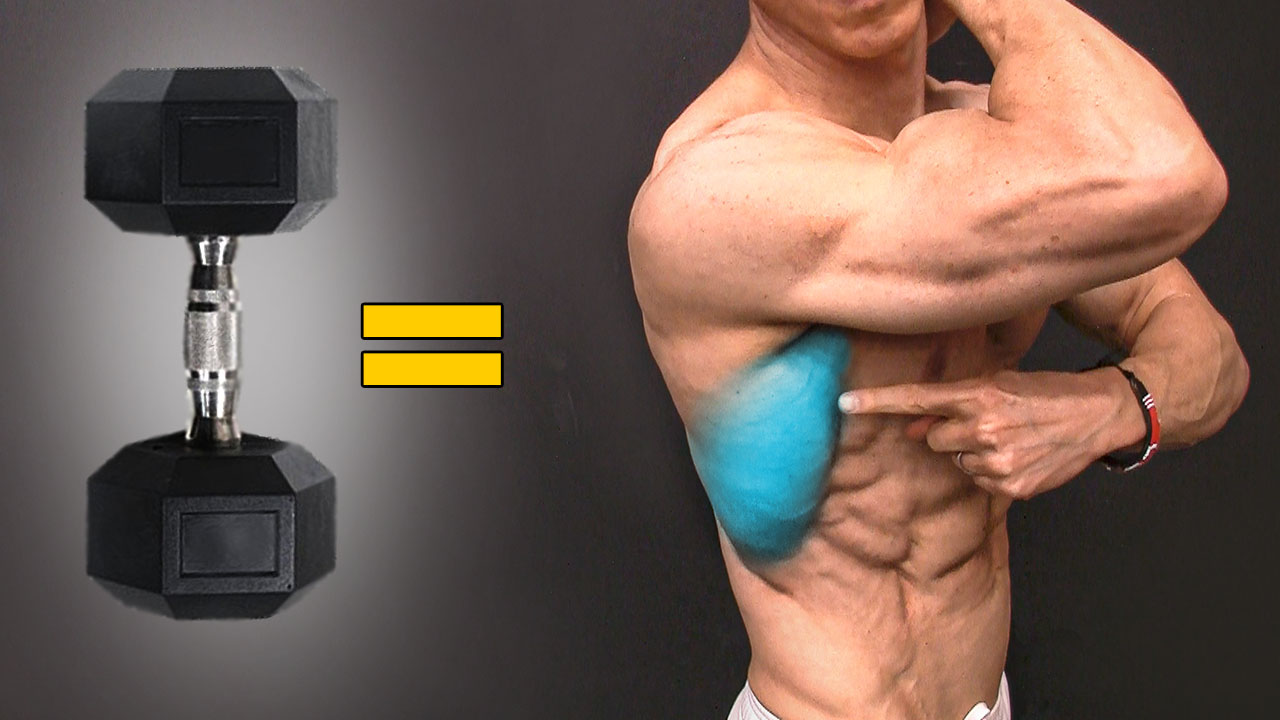
BEST DUMBBELL BACK EXERCISES
How did I set out to choose the best dumbbell exercises for the back?
Well…
I’ll tell you what I DIDN’T do.
I didn’t base my choices on misinterpreted and misinformed EMG data, or by copying someone else’s article or YouTube video…
NO.
Instead, ALL of my exercise selections are carefully chosen based on real science, combined with a corrective and injury prevention perspective that I bring as a physical therapist.
And when it comes to choosing my favorite dumbbell moves?
That really depends on what goal you’re training for.
So that you’re covered no matter what, I’m going to show you the single best dumbbell exercise you can do for each of these goals: strength, power, hypertrophy, metabolic, total body, corrective and low back.
These dumbbell back moves will show you that just because we have limited equipment doesn’t mean we can’t effectively target the back muscles and build muscle. What’s more, one of the advantages of training with dumbbells is that it helps you avoid muscle imbalance because each side lifts its own weight!
We’ve got a lot of ground to cover, so let’s get started!
STRENGTH
When it comes to back strength, the goal is always going to be progressive overload.
While there are some rowing based exercises that are done with dumbbells, I prefer to choose a more challenging exercise and add some weight to it.
The pullup is one of the greatest back exercises of all time. When you add some additional dumbbell weight, you’ve got an excellent exercise for building strength!
1.) WEIGHTED PULLUP

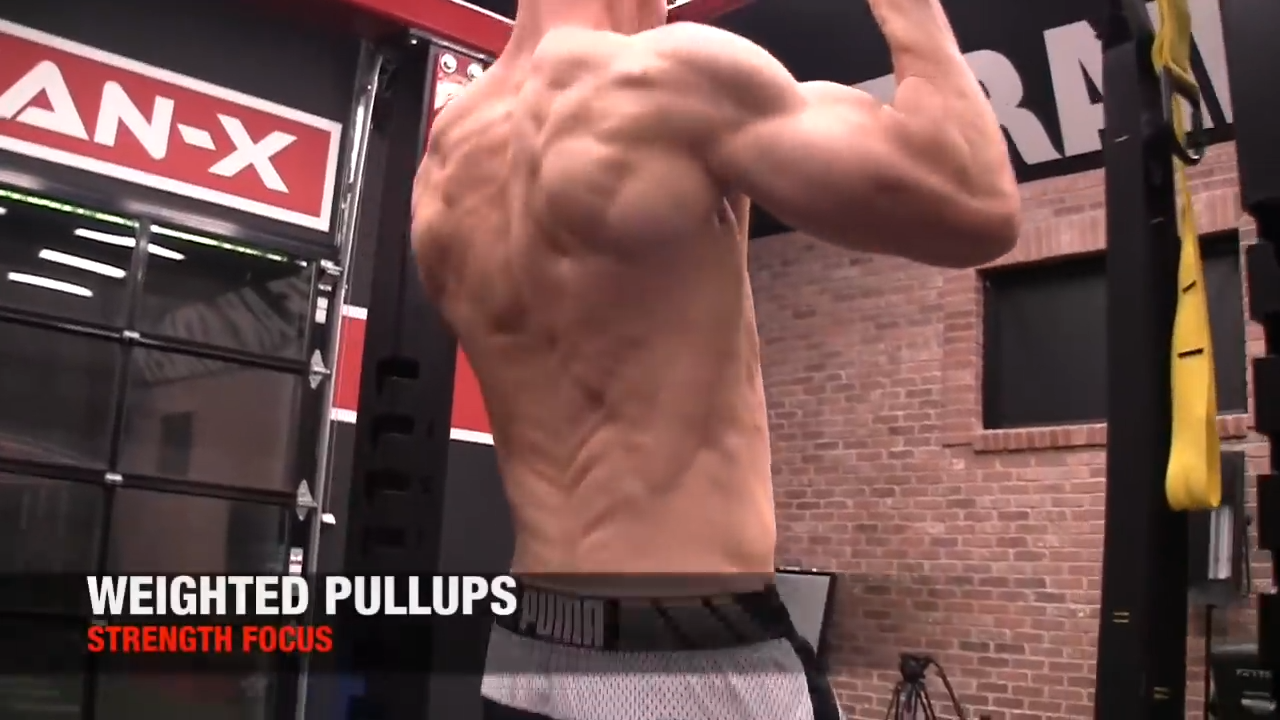
We have a couple different options for adding the dumbbell.
If you’re at home, you can take a dog leash and wrap it around a single dumbbell.

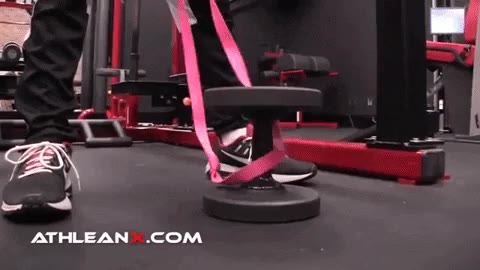
HOW TO DO THE WEIGHTED PULLUP:
- Using a dog leash or a dip belt, wrap around the dumbbell, hang it on your hips, jump up on the bar. Even easier is to place the dumbbell on the floor, step up onto it and grab the pullup bar with your hands. Then grab the dumbbell between your feet and start performing your pullups.
- Raise your arms above your head and grab the bar in an overhand grip with palms facing away from you and hang straight, then pull yourself up in a straight line until your chin clears the bar, keeping your core tight throughout the movement.
- Slowly lower yourself back down, returning to starting position. Use strict form and maintain core strength in this exercise.
If you’re at the gym you have the option of using a dip belt. Just wrap it around the dumbbell, hang it on your hips, jump up on the bar, and go!
Even easier is to place the dumbbell on the floor, step up onto it and grab the pullup bar with your hands. Then grab the dumbbell between your feet and start performing your pullups.
Raise your arms above your head and grab the bar palms facing away from you and hang straight, then pull yourself up in a straight line until your chin clears the bar, keeping your core tight throughout the movement. Slowly lower yourself back down, returning to starting position.

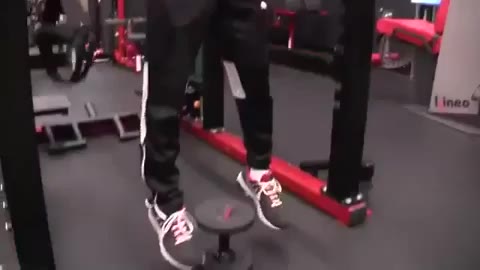


The pullup with additional dumbbell weight in addition to the weight of your body creates a great opportunity for progressive overload. Simply add more dumbbell weight each time you do the exercise!
POWER
To train the back for power, you need to choose a dumbbell exercise that allows you to incorporate speed and explosiveness into the movement.
For me there’s none better than the Dumbbell Dead Row.
2.) DUMBBELL DEAD ROW


HOW TO DO A DUMBBELL DEAD ROW:
- Starting position for this rowing variation is standing with feet hip width apart, bending forward in hinge position (bent-over position) with a soft bend in the knees, hands on dumbbells which are sitting on either side of you on the floor.
- Grab the dumbbells and begin these dumbbell rows by generating a huge amount of force through your feet into the ground, and then drive up in one motion just like in the dumbbell deadlift.
- From that point on, you drive the dumbbells up and back behind your entire torso into a rowing motion, then return to starting position. It is essentially a deadlift up to the level of the knee, at which point the elbows are driven behind the body, pulling the weights back with the strength and power of the lats.
- Keep your core muscle tight throughout the movement and use strict form to avoid injury.
The element of explosiveness in this exercise comes from the fact that the force is generated through your feet into the ground.
You can use heavier loads on this upper back exercise as much as you can handle. This is a zero-momentum exercise that’s going to require a lot of coordinated explosiveness through your feet, up into your arms and ultimately through the back, lats and rhomboid muscles to help you develop explosive power in the upper back muscles.
HYPERTROPHY
When we’re trying to create muscle growth in our upper body dumbbell workouts, we look to do the opposite of what we’re doing when we have a strength or power focus.
Instead of trying to incorporate multiple muscles into the activity you’re doing, you want to isolate the muscle you’re looking to overload.
That means if we’re trying to create more lat growth, we need to make the lats do all the work!
We can do that best with the classic Dumbbell Pullover. This exercise really targets the lats!
3.) DUMBBELL PULLOVER

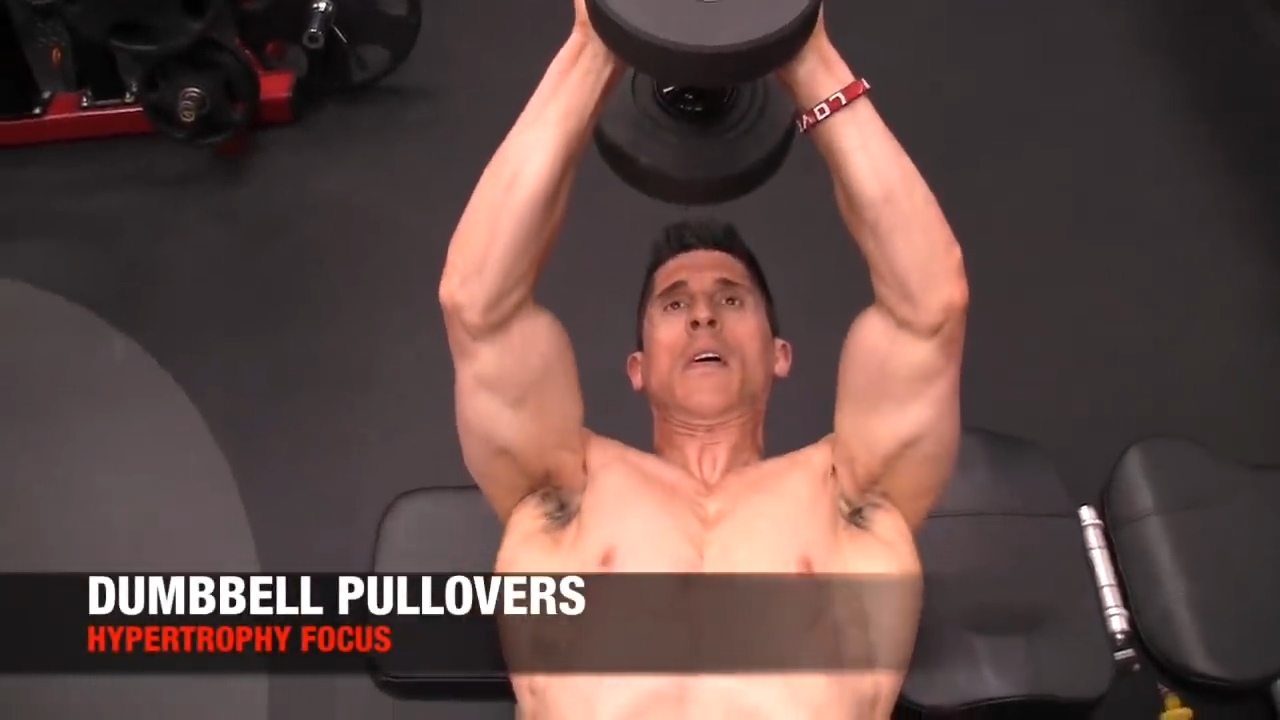
HOW TO DO THE DUMBBELL PULLOVER:
- Body positioning is lying on a weight bench perpendicularly, feet shoulder width apart knees slightly bent, dropping the hips down and holding a single dumbbell in both hands in overhead position, entire torso parallel to the floor.
- With a slight bend in your elbows, start by lowering the dumbbell back and over your head, arms extended.
- Then start raising the dumbbell up and over, shoulder blades maintaining contact with the weight bench.
- Maintain core stability and spinal stability throughout the exercise, including being care of the thoracic spine and cervical spine. Be sure to use proper form to avoid shoulder injuries.
With this lat pullovers exercise there are a couple important things about the setup to take note of.
First, you want to position your body perpendicular to the bench instead of lying on it the long way.
Why?
Because it allows us to manipulate our hips to create more of stretch in the lats, which is a known stimulus for muscle hypertrophy.
We can do this by dropping the hips down, which causes the lats to get further from each other when the hips get further away from the arms. Then as we drop the dumbbell back in position, you should immediately feel a lot more tension placed on the lats.

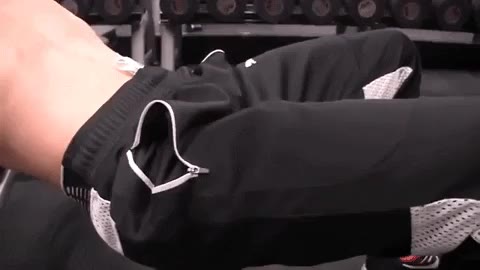
Here’s one more tweak that I think is extremely beneficial!
You can do some assisted eccentrics at the end. When you’ve reached failure, just because you’re concentrically fatigued, it doesn’t mean you can’t do some more eccentric work.
All we have to do is simply cheat the motion back up to the starting position. So, I drag the dumbbell over one of my shoulders, extend it over chest level utilizing my triceps, and then go back into a nice, long-armed, eccentric pullover.

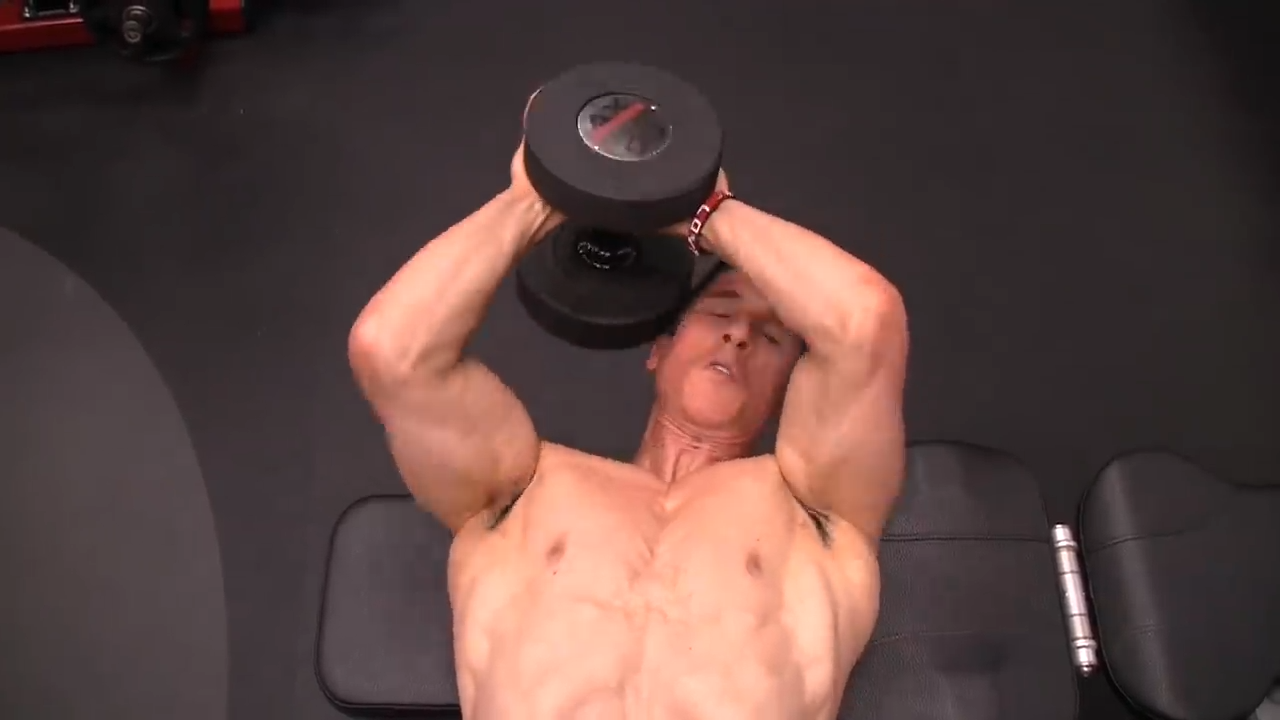
Do a few assisted eccentric reps this way and I promise you, you’re going to get even more out of what is already a very effective exercise for creating hypertrophy. Use a strong mind-muscle connection to make these eccentrics all the more effective!
METABOLIC
When we’re training the back metabolically, we’re looking to create that burn and sustain it without compromising the low back in the process.
We know that any standing row variation that might give us that type of burn in the lats will cause our low back to fatigue first, which is going to compromise the safety of the exercise.
However, there IS a way around this problem!
You can protect your back by doing the dumbbell Chest Supported Touch Row.
4.) CHEST SUPPORTED TOUCH ROW


HOW TO DO THE CHEST SUPPORTED TOUCH ROW:
- Start lying with the chest muscles down on an incline bench (prone position) holding a pair of dumbbells that are a heavier weight, with a second pair of dumbbells that are a light weight positioned on the floor ends up if possible.
- Begin rowing the dumbbells and touch the second set of dumbbells when you hit the bottom portion of the exercise.
- When you are fatigued with that pair of dumbbells, grab the second set of dumbbells and continue to rep out to push through the burn.
There are a couple of reasons this chest supported dumbbell row exercise helps you protect the back.
First, the prone position on the incline bench supports the back, which allows us to fatigue the lats without having to worry about the low back fatigue we would get if we were in standing position.
Second, this ‘touch row’ offers us some unique opportunities. To perform it, we have one set of dumbbells placed out in front of us on the ground, and another set in our hands that we’re going to try to touch the first set with.

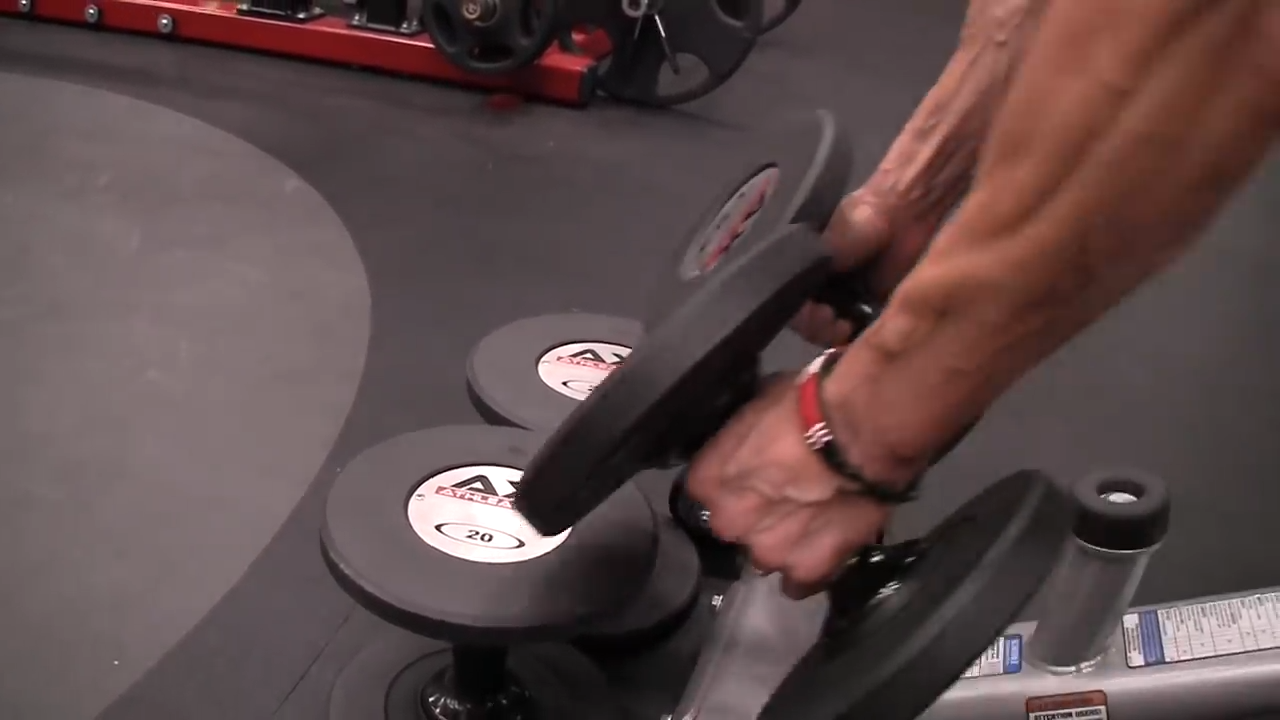
Why are we doing this?
It gives us an additional stretch on the lats as we move outward with each repetition in front of the body. The anatomy of the lats is going to require the arm to travel up and ahead of us to get more of a stretch.
But additionally, those other dumbbells are literally sitting out there waiting for you to use them for a drop set to keep that burn going!
If you choose a lighter set of dumbbells for the pair sitting on the ground, you can just grab them and continue repping out once you’ve fatigued with your first set of dumbbells to metabolically increase the effectiveness of this exercise.
Remember, when you’re trying to train metabolically, you push to that level of burn, and then through it. With this exercise we can accomplish that, and thanks to the setup we can protect the low back in the process.
TOTAL BODY
Next I’ll show you that it’s possible to find a total body exercise that gets muscle activation in the lats as well.
The Manmaker is my favorite exercise for this purpose.
With a single pair of dumbbells, we’re going to go from a pushup, into a single-arm dumbbell row on each side, jump back in, clean the dumbbells up, stand and press, and come back down.
If you look at the component motions in this exercise, we’re getting a push, into a pull, back into a total body push.
5.) MANMAKER

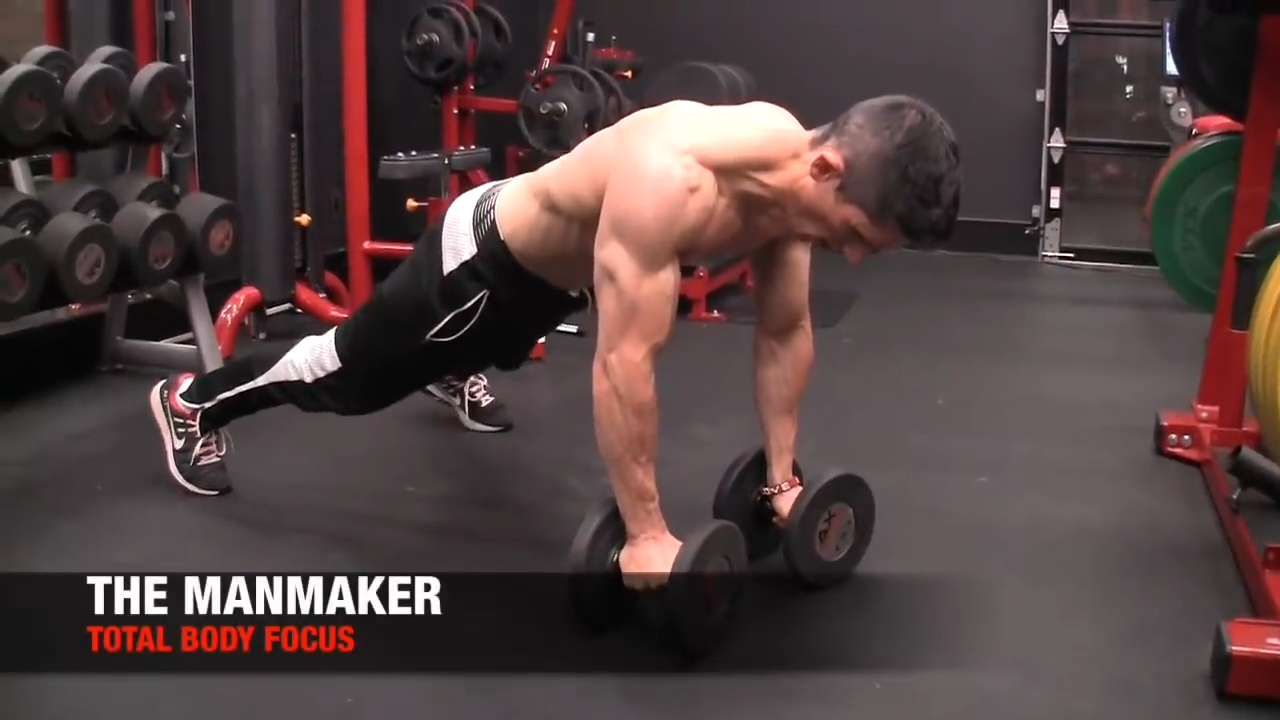
HOW TO DO THE MANMAKER:
- Starting position for this challenging movement is in pushup position (elevated plank position) holding onto a pair of dumbbells with both hands, dumbbells and feet on the floor.
- Perform a pushup and then perform a classic renegade row with each of the dumbbells back one at a time.
- Then jump to your feet (feet about shoulder width apart) into upright position, then clean and press the dumbbells.
- Lower back down and resume the pushup position and repeat.
- Maintain core stability throughout the exercise.
I love the effectiveness of this full-body exercise and the sequencing that it provides. But there are a couple other key things about it that make it a great exercise.
First, you’re not compromising the back in the process of doing a total body exercise.
Why is that?
Because the weight you use has to be determined by how much weight you can manage in the dumbbell renegade row.
For example, you could use fairly heavy dumbbells for the explosive standing clean and press portion of this movement. But you won’t be able to use that same weight for the single-arm dumbbell row portion. So you’re already limited to a safe weight for your back by virtue of having to choose a lighter weight that you can use for the renegade single-arm rows.
This exercise fits nicely into a total body program, and will help you build muscle mass your lats in the process.
CORRECTIVE
Corrective exercises really do determine your longevity and how you stay injury free in your training.
When you start neglecting them, that’s when injuries crop up!
My dumbbell corrective exercise of choice for the back is the ‘W’ Raise.
6.) ‘W’ RAISE

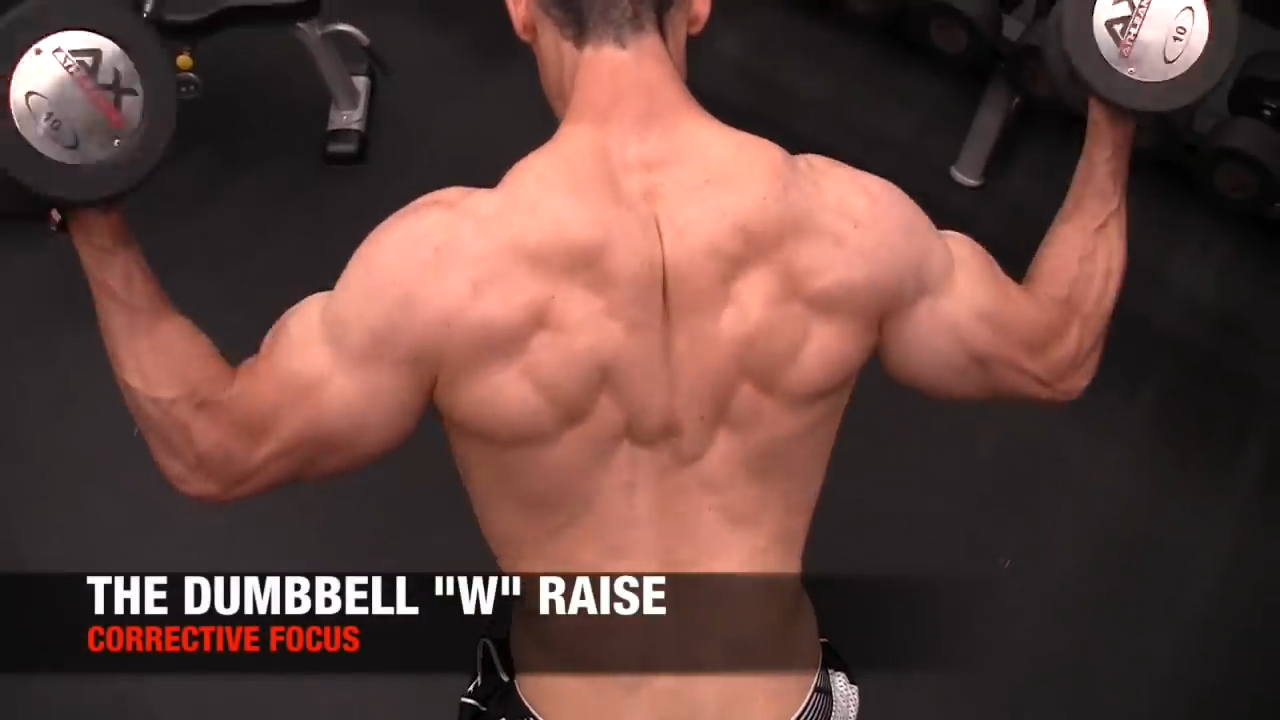
HOW TO DO THE ‘W’ RAISE:
- Starting position is kneeling on the ground, leaning slightly forward with a pair of lighter weights in your hands.
- Lift the dumbbells out to the side in a ‘W’ shape by externally rotating the shoulder and rotator cuff into the range of motion behind the elbow.
- Return to the starting position and repeat, maintaining abdominal stability throughout the movement.
Where does it get its name from?
It’s the position of your arms in relation to your body. You’re literally trying to form a ‘W’.
Right away, you’re going to notice that this achieves muscle activation in all of the major muscle areas of the back and middle portion of the levator scapulae. But most importantly, you’re hitting some of the back muscles that people don’t even regard as ‘back muscles.’
Namely, the rotator cuff.


People forget just how important the rotator cuff muscles are to the overall development of the back!
We know if we can get the muscle fibers on the backside of the shoulder to externally rotate that shoulder, we’re going to incorporate the rotator cuff into what we’re doing. We do this in the ‘W’ Raise by putting the hands back behind the elbow into this position.


If you’re not getting the hands back behind the elbow and you’re instead extending the entire arm back behind the body, your movement is going to be driven mostly by the posterior deltoids instead of the rotator cuff.
There’s nothing wrong with that, but we’re not looking to hit the rear delts with this exercise.
The ‘W’ Raise is a really easy exercise to do with a lot of bang for your buck. It hits it all, from the rotator cuff to the mid-scapular muscles to the low back. This all-in-one exercise is going to give you a lot of corrective benefits that are going to last long after this set ends!
LOW BACK
No dumbbell back workout would be complete without an additional movement that strengthens the lower back.
The Bench Reverse Hyper is an exercise that becomes even more useful for the lower back if you are able to add a little weight to it.
7.) DUMBBELL BENCH REVERSE HYPER


Some people may not be able to tolerate any weight, but it’s still a great bodyweight back exercise.
If you are able to add a light dumbbell, it’s going to apply a bit of additional overload that will make this exercise even more effective and beneficial for you.
The glutes and low back – which need to work together – are not only chronically undertrained, but they’re almost never trained with additional weight.
This exercise gives us a chance to do that.
To do this, lie face down on the weight bench and let your legs hang off the flat bench right at the level of the hips. Reach down with your feet and grab the dumbbell you’ve positioned on the floor between your ankles. Then initiate and maintain a glute squeeze while you bring the legs back and straight out behind you.
It’s going to start as a glute exercise, and then it will transmit that force upward into the low back, forcing these two muscle groups to coordinate their efforts.
Do these for about 10 to 15 quality repetitions, making sure you’re initiating and maintaining the contraction with the glutes and low back.
Don’t try to cheat this by swinging the weight up as hard as you can. Quality contractions rule the day when it comes to this specialization exercise.
HOW TO DO THE DUMBBELL BENCH REVERSE HYPER:
- Lie face down on the weight bench and let your legs hang off the flat bench right at the level of the hips.
- Reach down with your feet and grab the dumbbell you’ve positioned on the floor between your ankles.
- Then initiate and maintain a glute squeeze while you bring the legs back and straight out behind you. It’s going to start as a glute exercise, and then it will transmit that force upward into the low back, forcing these two muscle groups to coordinate their efforts.
- Do these for about 10 to 15 quality repetitions, making sure you’re initiating and maintaining the contraction with the glutes and low back. Don’t try to cheat this by swinging the weight up as hard as you can. Quality contractions rule the day when it comes to this specialization exercise.
- Maintain core engagement throughout the exercise and be sure to use correct form.
As you can see, no matter what it is you’re trying to accomplish there should be a prescriptive exercise selection based around that. I’ve given you a lot of effective dumbbell back exercises here, and you can choose from them based on your current training regimen.
If you’re looking for a complete workout program that gives you not only the best back workout but hits every other muscle in your body to create massive muscle growth and performance, be sure to try our Program Selector and grab the ATHLEAN-X program that best matches your current training goals. We’ve got something for everyone… from beginners to experienced lifters.

- If you’ve only got dumbbells to work with, the best exercises for your back would be dependent on your training goal. I’ve shown you the best dumbbell biceps exercises for muscle strength, power, hypertrophy, metabolic, total body, corrective and a special focused exercise for the low back.
- For upper body strength I’ve chosen once of the best exercises of all time and added weight to it. This is the Weighted Pullup, which you can set up with my dog leash trick or simply by grabbing a dumbbell between your ankles.
- For power I love the speed and explosiveness of the Dumbbell Dead Row, thanks to the huge amount of force you can generate by driving your feet down into the ground, up into your arm muscles and then up through the lats.
- For hypertrophy we want to make the lats do all the work. We can isolate them with the Dumbbell Pullover. We can stimulate the hypertrophy even more by increasing the stretch on the lats with a special hip position. We can also employ assisted eccentrics to keep repping out beyond concentric failure.
- For metabolic, we can get the burn going in our lats without fatiguing our low back with the Chest Supported Touch Row. We can keep it going by grabbing the lighter set of dumbbells we were ‘touching’ to continue repping out.
- The ‘W’ Raise is my favorite corrective exercise for the back because it hits the frequently neglected rotator cuff in addition to the rest of the back and mid-scapular muscles.
- No list of favorite back exercises would be complete without one to hit the lower back. I’ve chosen the Dumbbell Bench Reverse Hyper because it allows us to hit the chronically undertrained glutes and low back – which prefer to work together – with a bit of extra weight.
DUMBBELL BACK EXERCISES FAQS
There is a wide range of exercises to include in your back workouts with dumbbells. While a compound movement pattern done with heavy loads on a barbell is great for muscle development, you could still build muscle mass with dumbbells. You can use dumbbell exercises to hit individual muscles of the back including upper traps, middle traps, and lower traps, front deltoids, middle deltoids and posterior deltoids. The benefits of dumbbell back workouts include include convenience, increase in muscle size and strength, and eliminating strength imbalances by fixing poor posture.
Here is a list of some of the best exercises with dumbbells for the back.
- Weighted Pullup - Classic exercise for building upper body strength and muscle coordination. Use a weight belt or dog leash to add a dumbbell for extra weight.
- Dumbbell Dead Row - This explosive variation of a dumbbell bent-over row helps you build power in the upper back.
- Dumbbell Pullover - This classic movement is great for the lats.
- Chest Supported Touch Row - This advanced dumbbell exercise which is an incline dumbbell row variation protects the back while fatiguing the lats.
- Manmaker - This difficult progression includes a pushup, a one-arm dumbbell row as well as a two arm dumbbell clean and press.
- W Raise - Achieves muscle contraction in the rotator cuffs as well as the rest of the upper back.
- Dumbbell Bench Reverse Hyper - Adding a light dumbbell to this lower back move will add a bit of overload.
There are many great exercises to include in your back workouts with dumbbells. If you have access to dumbbells, you can achieve excellent muscle development in the back with dumbbell back workouts. The benefits of training with dumbbells include convenience, increase in muscle size and strength, and eliminating strength imbalances in the upper body muscles by fixing poor posture. You can use dumbbell exercises to hit individual muscles of the back including upper traps, mid - traps, and lower traps, front deltoids, middle deltoids and rear delts.
Here is a list of some of the best exercises with dumbbells for the back. You will achieve muscle development in the upper body muscles including upper traps, mid - traps, and lower traps, front deltoids, middle deltoids and rear delts using this workout with dumbbells.
- Weighted Pullup - Classic exercise for building upper body strength and muscle coordination. Use a weight belt or dog leash to add a dumbbell for extra weight.
- Dumbbell Dead Row - This explosive variation of a regular dumbbell row helps you build power in the upper back.
- Dumbbell Pullover - This classic movement is great for the lats.
- Chest Supported Touch Row - This advanced dumbbell exercise which is an incline dumbbell row variation protects the back while fatiguing the lats.
- Manmaker - This difficult progression includes a pushup, a one-arm dumbbell row as well as a two arm dumbbell clean and press.
- W Raise - Achieves muscle contraction in the rotator cuffs as well as the rest of the upper back.
- Dumbbell Bench Reverse Hyper - Adding a light dumbbell to this lower back move will add a bit of overload.
Standard dumbbell rows are an excellent exercise for activating the back. The target muscles worked in this bent-over row exercise are the muscle fibers of the lats, rear deltoids, traps, teres major and rhomboids.
REFERENCES

Jeff Cavaliere M.S.P.T, CSCS
Jeff Cavaliere is a Physical Therapist, Strength Coach and creator of the ATHLEAN-X Training Programs and ATHLEAN-Rx Supplements. He has a Masters in Physical Therapy (MSPT) and has worked as Head Physical Therapist for the New York Mets, as well as training many elite professional athletes in Major League Baseball, NFL, MMA and professional wrestling. His programs produce “next level” achievements in muscle size, strength and performance for professional athletes and anyone looking to build a muscular athletic physique.
















